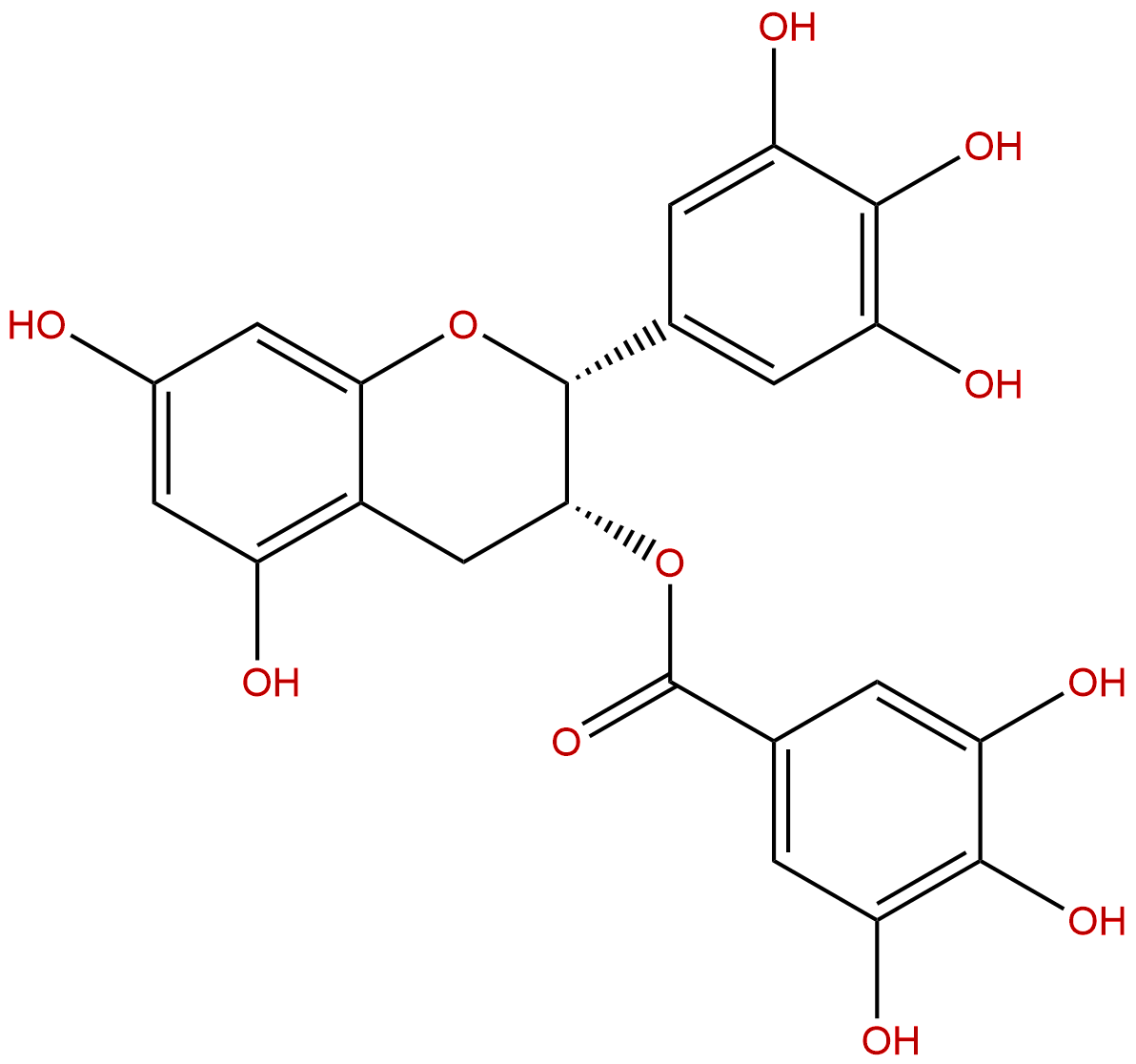Epigallocatechin gallate Descrtption
Synonym name: EGCG; 3-O-Galloylepigallocatechin; Teatannin II; Epigallocatechin 3-gallate
Catalogue No.: BP0542
Cas No.: 989-51-5
Formula: C22H18O11
Mol Weight: 458.375
Botanical Source: tea (Thea sinensis), Myrica esculenta, Mallotus japonicus and other plant spp.
Purity: 95%~99%
Analysis Method: HPLC-DAD or/and HPLC-ELSD
Identification Method: Mass, NMR
Packing: Brown vial or HDPE plastic bottle
Can be supplied from milligrams to grams,up to Kgs, Ton.
Properties: Epigallocatechin gallate possess the most potent antioxidant activity of the catechins.
Epigallocatechin gallate may provide health effects by protecting our cells from oxidative damage from free radicals. A number of chronic disease have been associated with free radical damage, including cancer, arteriosclerosis, heart diseases and accelerated aging. Epigallocatechin gallate interferes with many enzyme systems: it inhibits fast-binding and reversible fatty acid synthase, increases tyrosine phosphorylation of the insulin receptor, activation of ornithine decarboxylase.
Epigallocatechin gallate can protect the DNA in the human cells from ultraviolet and visible radiation-induced damage.
Epigallocatechin gallate may be effective in promoting fat oxidation and lowering body weight.
Safety: Green tea consumption of as much as 20 cups per day has not been assoiated with any significant side effects. Acute studies reported the oral LD50 of EGCG in mice was 2170mg/kg bw.
EGCG and HIV
There has been some research investigating the benefit of EGCG from green tea in the treatment of HIV infection. One study examined the molecular binding of ECGC to the CD4 receptor molecule on human lymphocytes. The CD4 receptor is the site where the HIV virus attaches to a cell before infecting it. To bind to CD4, HIV uses its own receptor gp120. The study found "clear evidence of high-affinity binding of EGCG to the CD4 molecule" and "inhibition of gp120 binding to human CD4+ T cells." [3][4] The mechanism is very similar to a new class of anti-HIV medications, the entry inhibitors. For reasons not yet understood, EGCG seems to have an inhibitory effect on other steps of the HIV lifecycle, including suppression of reverse-transcriptase concentration and decreased protease kinetics.[5] These effects have only been observed in laboratory studies, not in HIV+ individuals. The concentrations of EGCG used in the studies could not be reached by drinking green tea. More study into EGCG and HIV is currently underway.[6]
References:
Katiyar S, Elmets CA, Katiyar SK (2007). "Green tea and skin cancer: photoimmunology, angiogenesis and DNA repair". J. Nutr. Biochem. 18 (5): 287-96. doi:10.1016/j.jnutbio.2006.08.004. PMID 17049833.
Neurodegeneration in autoimmune demyelination: Recent mechanistic insights reveal novel therapeutic targets. Orhan Aktas, Sonia Waiczies, Frauke Zipp [1]
Williamson MP, McCormick TG, Nance CL, Shearer WT. Epigallocatechin gallate, the main polyphenol in green tea, binds to the T-cell receptor, CD4: Potential for HIV-1 therapy. J Allergy Clin Immunol. 2006 Dec;118(6):1369-74. Epub 2006 Oct 13. PMID: 17157668
Hamza A, Zhan CG. How can (-)-epigallocatechin gallate from green tea prevent HIV-1 infection? Mechanistic insights from computational modeling and the implication for rational design of anti-HIV-1 entry inhibitors. J Phys Chem B. 2006 Feb 16;110(6):2910-7. PMID: 16471901
Yamaguchi K, Honda M, Ikigai H, Hara Y, Shimamura T. Inhibitory effects of (-)-epigallocatechin gallate on the life cycle of human immunodeficiency virus type 1 (HIV-1). Antiviral Res. 2002 Jan;53(1):19-34. PMID: 11684313
Nance CL, Shearer, WT. Is green tea good for HIV-1 infection? Journal of Allergy and Clinical Immunology Volume 112, Issue 5, November 2003, Pages 851-853. PMID: 14610469.
HPLC of Epigallocatechin gallate



